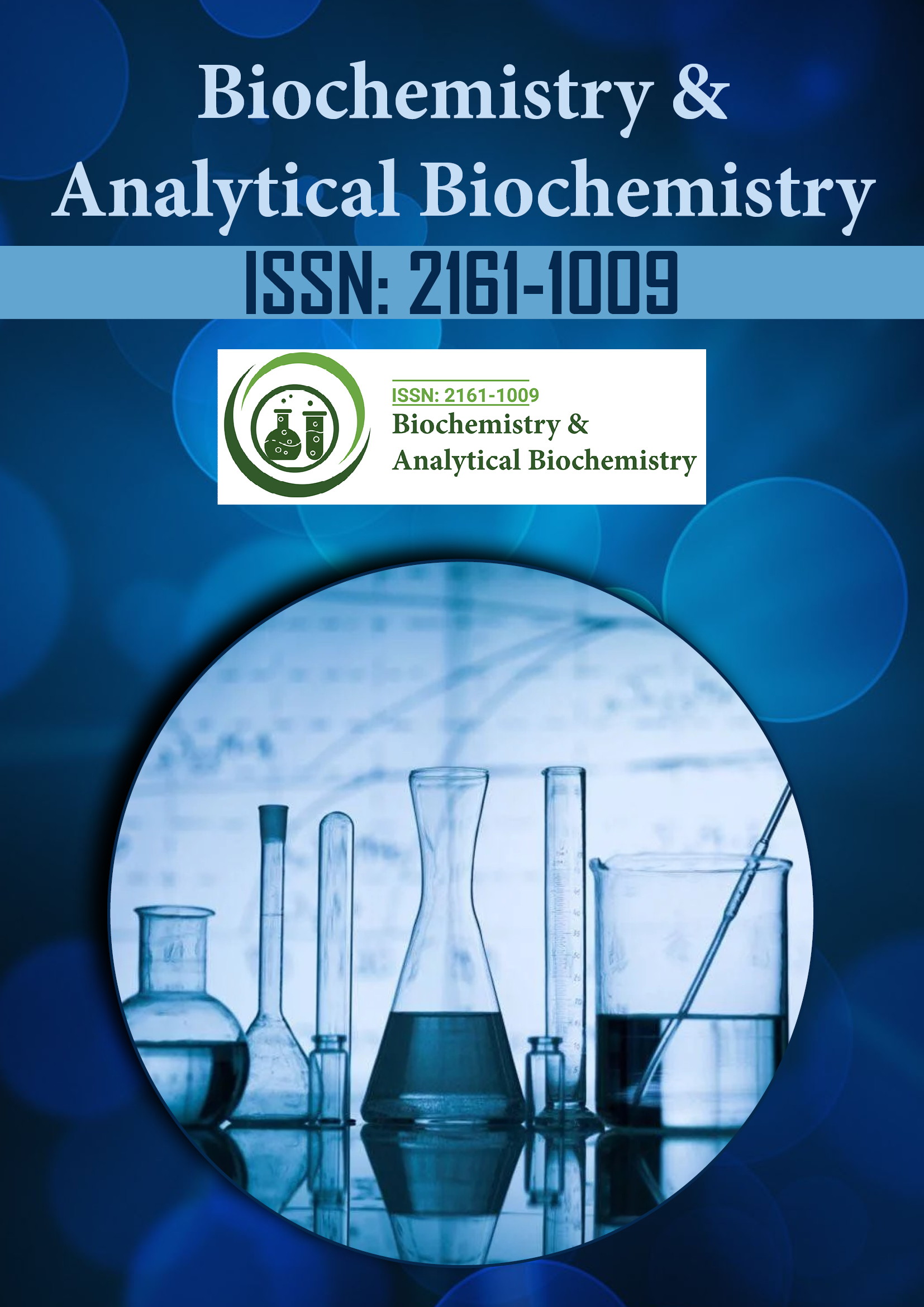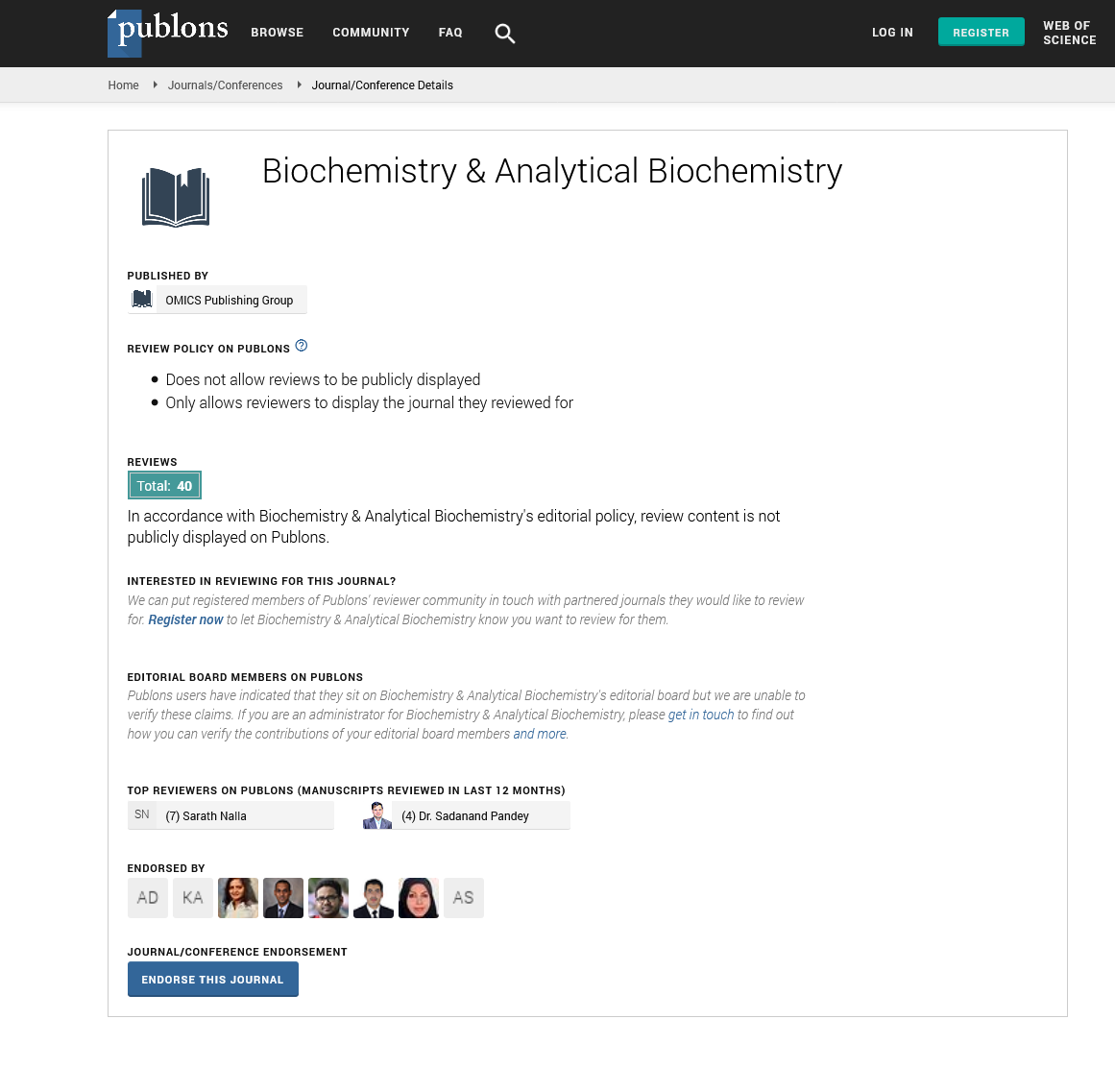Indexed In
- Open J Gate
- Genamics JournalSeek
- ResearchBible
- RefSeek
- Directory of Research Journal Indexing (DRJI)
- Hamdard University
- EBSCO A-Z
- OCLC- WorldCat
- Scholarsteer
- Publons
- MIAR
- Euro Pub
- Google Scholar
Useful Links
Share This Page
Journal Flyer

Open Access Journals
- Agri and Aquaculture
- Biochemistry
- Bioinformatics & Systems Biology
- Business & Management
- Chemistry
- Clinical Sciences
- Engineering
- Food & Nutrition
- General Science
- Genetics & Molecular Biology
- Immunology & Microbiology
- Medical Sciences
- Neuroscience & Psychology
- Nursing & Health Care
- Pharmaceutical Sciences
Opinion Article - (2023) Volume 12, Issue 6
Understanding Adenosine Triphosphate Synthase in Cellular Metabolism
Thomas Edion*Received: 27-Nov-2023, Manuscript No. BABCR-23-24442; Editor assigned: 29-Nov-2023, Pre QC No. BABCR-23-24442 (PQ); Reviewed: 14-Dec-2023, QC No. BABCR-23-24442; Revised: 20-Dec-2023, Manuscript No. BABCR-23-24442 (R); Published: 28-Dec-2023, DOI: 10.35248/2161-1009.23.12.526
Description
The oxidation of "metabolic fuels" such as carbohydrates, lipids, and proteins provides energy. Following that, it is used to maintain energy-dependent processes such as macromolecule synthesis, muscle contraction, active ion transport, and thermogenesis. Free energy produced by the oxidation process can be stored in molecules such as nucleoside diphosphate and nucleoside triphosphate (i.e., adenosine 5′ diphosphate and adenosine 5′ triphosphate, respectively), phosphoenolpyruvate, carbamoyl phosphate, 2,3-bisphosphoglycerate, and other phosphagens such as phosphoarginine or phosphocreatine Adenosine Triphosphate (ATP) serves as the effective core link between these processes, which generally involve the synthesis, hydrolysis, or transfer of the terminal phosphate group.
ATP synthase is a protein that directly produces adenosine triphosphate during cell respiration. ATP is the most important energy atom in cells. ATP synthase creates ATP from Adenosine Diphosphate (ADP) and an inorganic Phosphate (Pi) via oxidative phosphorylation, a cycle in which chemicals oxidize nutrients to form ATP. ATP synthase is found in all living things and regulates general cell functions. Five structures complete oxidative phosphorylation by serving as locations for electron transport and ATP synthesis. Among these, Intricate V (also known as the F1F0 ATP Synthase or ATPase) is responsible for the generation of ATP by phosphorylation of ADP using electrochemical energy generated by proton inclination across the inward layer of mitochondria.
A multi-subunit structure that functions as a siphon along the proton slope across the films, causing ATP mix and breakdown while also working with electron transport. Because ATP is the primary source of energy in all living cells, its formation and function have been extensively studied in recent years, with the discovery of several ATP synthase components. This study intends to summarize the ATP synthase's construction, capability, and hindrance. ATP synthase has the ability to produce ATP. Because ATP is required to manage every single cell action, it is constantly used by cells and should be produced. Every ATP synthase can continuously produce roughly 100 atoms of ATP.
Eukaryotes, like plants, animals, and growths, have mitochondria, which are primarily capable of producing ATP. Plants have chloroplasts, which include ATP synthase and can produce ATP from light and carbon dioxide. Prokaryotes are microscopic organisms and archaea that lack mitochondria but manufacture ATP through analogous cell breath mechanisms in their plasma film. ATP synthase has a comparable design and capabilities across all forms of life. In this way, it is remembered to have developed almost immediately in the progression of life, and would have been discovered in the last normal precursor of all life on earth.
ATP is produced in a variety of ways, including cell respiration in the mitochondria, photosynthesis in the chloroplasts of plants, and throughout the internal film of tiny organisms and archaea, which lack mitochondria. Although the methods for producing ATP differ between different types of living beings, they always follow a similar fundamental pattern. The particles Nicotinamide Adenine Dinucleotide Hydrogen (NADH) and Flavin Adenine Dinucleotide Hydride (FADH2), which are products of the citrus extract cycle, carry electrons down an electron transport chain in eukaryotic mitochondria, passing through three separate protein edifices. This connection releases energy, which allows protons to move down a proton slope through the protein structures, which operate as proton siphons.
The movement of these protons down the slope rotates the rotor and tail of the ATP synthase, allowing a phosphate group to join with adenosine diphosphate to form ATP. The cycle is similar in chloroplasts, with the exception that light energy energizes electrons, causing them to flow down the electron transport chain and allowing H+ particles to pass through a film in the chloroplast.
Citation: Edion T (2023) Understanding Adenosine Triphosphate Synthase in Cellular Metabolism. Biochem Anal Biochem. 12:526.
Copyright: © 2023 Edion T. This is an open-access article distributed under the terms of the Creative Commons Attribution License, which permits unrestricted use, distribution, and reproduction in any medium, provided the original author and source are credited.

